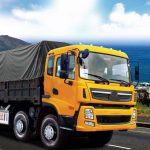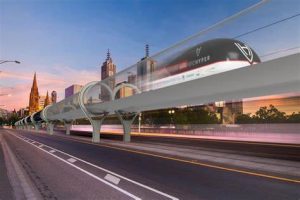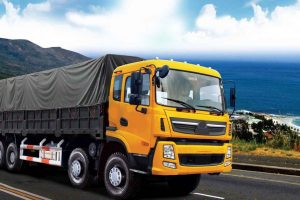Transportation is an essential part of our daily lives, and it has come a long way since the early days of horse-drawn carriages and steam engines. Today, we have a wide range of transportation options available, from cars and buses to trains and airplanes. In this guide, we will explore the different types of transportation, their history, benefits, and drawbacks, and look at some of the trends and innovations shaping the future of transportation.
Types of Transportation
1. Cars and Personal Vehicles
Cars are one of the most popular forms of transportation, offering a high degree of flexibility and convenience. They are ideal for short and long-distance travel, and with the rise of electric and hybrid vehicles, they are becoming more environmentally friendly. However, cars also have their drawbacks, such as traffic congestion, parking issues, and air pollution.
2. Buses and Public Transportation
Buses are an affordable and efficient way to move large groups of people, making them a popular choice for public transportation. They are also a more environmentally friendly option than cars, emitting less greenhouse gas per passenger. Buses come in various sizes and types, from city buses to coach buses, and they often have dedicated lanes to minimize delays.
3. Trains
Trains are a comfortable and reliable mode of transportation, suitable for long-distance travel. They offer a range of amenities, such as food and beverage services, comfortable seating, and onboard entertainment. Trains are also a more environmentally friendly option than cars or planes, emitting less greenhouse gas per passenger.
4. Airplanes
Airplanes are the fastest way to travel long distances, making them a popular choice for intercontinental travel. They offer a range of amenities, such as in-flight entertainment, meal service, and comfortable seating. However, airplanes are also one of the most environmentally harmful forms of transportation, emitting large amounts of greenhouse gas.
5. Bicycles
Bicycles are a sustainable and healthy mode of transportation, suitable for short distances. They are also a cost-effective option, requiring minimal maintenance and no fuel. Bicycles come in various styles, from road bikes to mountain bikes, and they can be equipped with accessories such as baskets, bells, and lights.
6. Boats
Boats are a popular mode of transportation for coastal and riverine areas. They come in various sizes and types, from small fishing boats to large cruise ships. Boats offer a range of amenities, such as onboard entertainment, dining, and comfortable cabins. They are also a more environmentally friendly option than cars or planes, emitting less greenhouse gas per passenger.
7. Emerging Transportation Technologies
In recent years, there has been a surge of innovation in transportation technology, with the development of electric and autonomous vehicles, hyperloop systems, and flying cars. These technologies promise to revolutionize the way we travel, making transportation faster, cleaner, and more efficient.
Benefits of Transportation
Transportation offers a range of benefits, from economic growth to personal convenience. Some of the key benefits include:
1. Economic Growth
Transportation plays a crucial role in economic growth, facilitating the movement of goods and services. It helps businesses to reach new markets, customers, and suppliers, promoting trade and commerce.
2. Job Creation
Transportation creates jobs, from manufacturing and maintenance to logistics and transportation services. It also supports industries such as tourism and trade, which create additional employment opportunities.
3. Personal Convenience
Transportation offers personal convenience, allowing people to travel to work, school, and leisure activities. It also enables people to visit friends and family who live far away.
4. Social Connectivity
Transportation helps to connect people, fostering social relationships and community cohesion. It enables people to participate in social activities, such as cultural events and festivals.
5. Environmental Benefits
Some forms of transportation, such as electric and hybrid vehicles, offer environmental benefits, reducing greenhouse gas emissions and air pollution. Public transportation also reduces the number of cars on the road, minimizing congestion and emissions.
Drawbacks of Transportation
While transportation offers many benefits, it also has its drawbacks, including:
1. Congestion
Traffic congestion is a major drawback of transportation, causing delays, frustration, and air pollution. It also leads to increased fuel consumption and greenhouse gas emissions.
2. Accidents
Transportation accidents are a major cause of injury and death, with cars, motorcycles, and airplanes being the most dangerous modes of transportation.
3. Environmental Impact
Some forms of transportation, such as cars and airplanes, have a significant environmental impact, emitting greenhouse gases and contributing to climate change.
4. Cost
Transportation can be expensive, from the cost of fuel and maintenance to public transportation fares. It can also be a significant burden for low-income households.
5. Infrastructure Challenges
Transportation infrastructure can be a challenge, with roads, bridges, and public transportation systems requiring regular maintenance and upgrades.
Future of Transportation
The future of transportation looks exciting, with emerging technologies and trends shaping the way we travel. Some of the key trends and innovations include:
1. Electric and Autonomous Vehicles
Electric and autonomous vehicles are becoming increasingly popular, offering a cleaner and more efficient mode of transportation. They are also becoming more affordable, with many car manufacturers offering electric and hybrid models.
2. Hyperloop Systems
Hyperloop systems are a new mode of transportation, using vacuum-sealed tubes to transport passengers at high speeds. They promise to revolutionize long-distance travel, reducing journey times and environmental impact.
3. Flying Cars
Flying cars are a new mode of transportation, using electric or hybrid engines to hover and fly. They promise to reduce congestion and travel times, offering a new level of personal freedom.
4. Public Transportation Innovations
Public transportation is also undergoing a transformation, with the development of smart buses and trains that use data analytics and artificial intelligence to optimize routes and schedules.
5. Shared Mobility
Shared mobility is a growing trend, with people sharing cars, bicycles, and scooters to reduce costs and environmental impact. It also promotes a more sustainable and efficient use of transportation resources.
Transportation is an essential part of our daily lives, offering a range of benefits and drawbacks. As we move towards a more sustainable and efficient future, emerging technologies and trends are shaping the way we travel. From electric and autonomous vehicles to hyperloop systems and flying cars, the future of transportation looks exciting and promising. By embracing these innovations, we can create a transportation system that is cleaner, more efficient, and more sustainable for generations to come.
















Add Comment